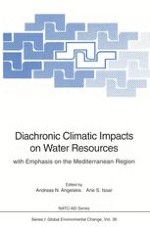Since the beginning of man's existence on Earth, the adequacy of available water has been as important as any other factor for man's survival and prosperity.
The volume comprises comprehensive reviews on: Paleoenvironments of arid land, climate-water-man interactions, water resources in the Minoan era, ancient Greek examples of avoiding water shortages, climatic changes in the eastern Mediterranean region since 5000 B.C., climatic evolution in ancient civilizations based on fossil studies, impact of climatic changes on groundwater and Mediterranean wetlands.
The book is written for civil and agricultural engineers, hydrologists, geologists, environmental scientists and researchers. It is also useful as a reference to consulting engineers, agriculturists, environmentalists and students.
